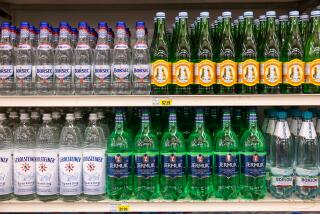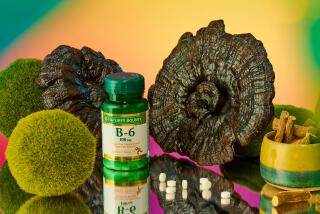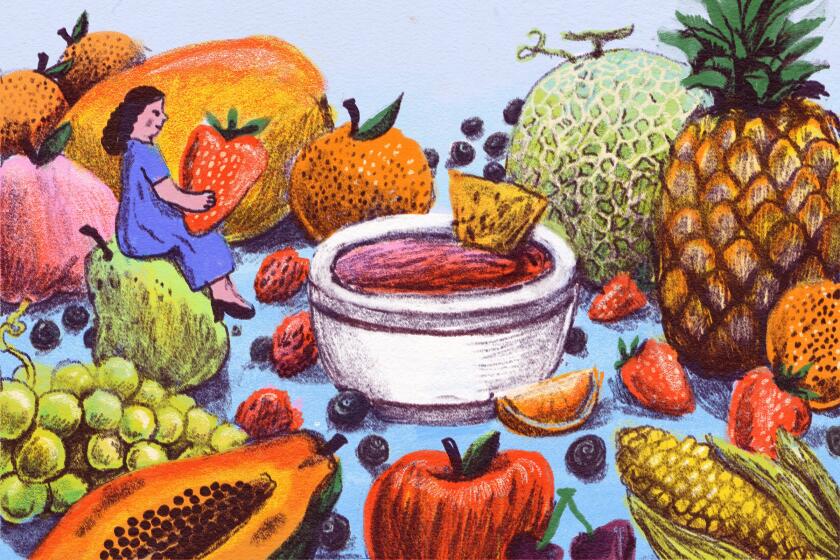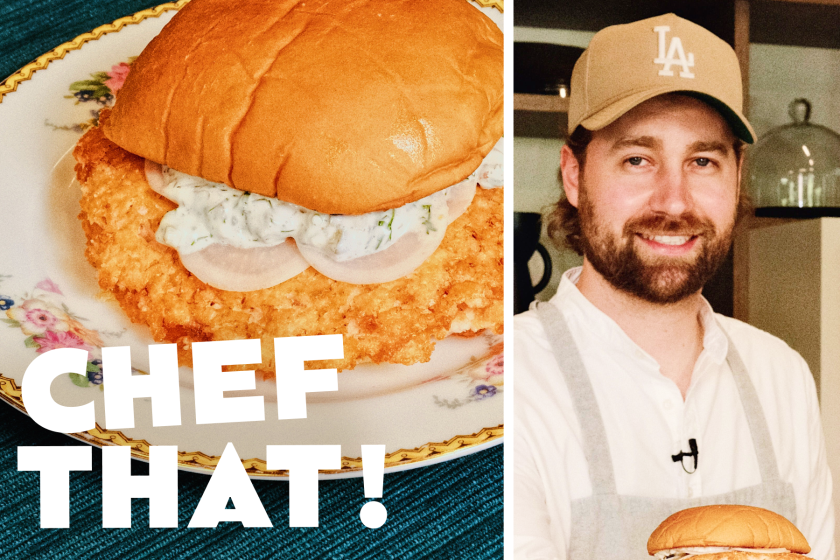Bad News: The Sinking Jug
It’s still possible to get a good bottle of table wine for a few bucks, but don’t expect any of the bargains we saw a decade ago.
Today’s jug wines look different (they now generally have varietal names such as Chardonnay and Cabernet Sauvignon) and are priced quite a bit differently from the generic Chablis and Burgundy of the past. Most varietal jug wines sell for $5.99 to $6.99. Moreover, few of them are as good as jug wines that went for $4.99 or less a decade ago.
One element in the change is the Gallo factor. Market forces have left one company, the E & J Gallo Winery, in the driver’s seat in terms of pricing and, to some degree, quality.
The lower the profit margin on a bottle of wine, the more vital it is to control costs. Only wineries with economies of scale can compete directly against industry giant Gallo, which owns its own printing plant (for labels, boxes and promotional material), bottle-making plant and trucking company. This means some wineries in the lower end of the premium wine business have been forced to upscale in order to escape the market niches where Gallo is king.
“Wineries in every niche that Gallo is in have to be mindful of Gallo,” says Ed Everett, a San Francisco-based wine industry marketing consultant. “The sheer weight of Gallo’s distribution creates a benchmark for pricing. To succeed these days, you have to add value in some other way, whether it be packaging, third-party endorsements, great marketing devices or something else.”
Another element in the recent market changes is taxes. In January 1991, federal and state excise taxes in California rose from 40 cents per case to $2.57 per case at the supplier level. Passing that tax through the traditional three-tier marketing system meant that all wine, regardless of cost, rose $5 a case, or 46 cents per bottle retail--a 10% increase on a bottle of wine selling for $4.
Still another factor affecting quality is the higher price of bulk wine. In the last decade, hundreds of acres of vineyard land in the central San Joaquin Valley (notably in the Bakersfield area) have been pulled out as unprofitable. Those vineyards had been a boon to jug wine makers because the lesser-quality grapes, made into bulk wine, only cost about $1 a gallon.
Use of dollar-a-gallon wine for a portion of a blend allowed the jug wineries to use better-quality Chardonnay and Cabernet from northern California in their blends, making a palatable wine.
Lately, with less cheap bulk wine available, the remainder of the San Joaquin grapes rose in price to almost $3 per gallon. In a Gallo-dominated market, a 1.5-liter bottle still has to sell for $7 or less, so jug wineries were obliged to start using lower-quality Chardonnay and Cabernet. The result is pretty dull jug wine.
The good news is that as you move up in price, the quality of the varietal wines is excellent; there are now many wines priced at $5 to $8 a bottle (750-milliliters) that represent good value.
At the lowest end (in quality and price) of the varietal field--the “upscale jug” wine market--are 1.5-liter bottles selling for $7 or less. Major players are Sebastiani, Blossom Hill, Almaden, Inglenook Navalle, Paul Masson, Taylor California Cellars, Estrella River, Corbett Canyon and Cribari.
The wines in this category are all similar, with light textures, simple flavors and slight amounts of residual sugar (even in the red wines). And though most of them have varietal designations, these really are little more than the jug wine generics of the past.
The best red wine I have tried in this category is the August Sebastiani Country Zinfandel, a soft, quaffable red wine that isn’t as good as it once was. I haven’t found a Chardonnay I really like in this segment, primarily because so little of it tastes like Chardonnay and so much of it is soft and slightly sweet. A slightly sweet but balanced wine in this category is Gallo’s Colombard.
Stepping up one notch in quality to 750-milliliter bottles that sell for $5 or so puts the consumer in the pop-premium segment. Here the wines are generally of a higher quality than they were two years ago. One reason is the quality of the recent vintages (1990 and 1991 were better years than 1988 and 1989).
The best wines in this category come from Glen Ellen, under the Proprietors Reserve designation, and Sutter Home (notably in Red Zinfandel and Cabernet). A personal favorite of mine, in a line not yet widely distributed, is Canyon Road, Geyser Peak’s recently developed brand. The line offers excellent Chardonnay, Sauvignon Blanc and Cabernet in the $6 price range.
Another line of top wines in this price range is the Bel Arbors line from Fetzer.
Others in this niche are Robert Mondavi-Woodbridge, Gallo, Vendange (Sebastiani), Corbett Canyon (with an excellent Merlot), Blossom Hill, the Monterey Vineyard, C.K. Mondavi, Masson Vineyards, Cook’s and Estrella River.
Although this category has improved in overall quality in the last few years, one still must choose carefully and watch for specials from higher-priced brands. For example, every so often wines from Columbia Crest, Estancia, Napa Ridge, Round Hill, Hawk Crest and others are discounted to the $6 price range, making them better values than these wines.
More to Read
Eat your way across L.A.
Get our weekly Tasting Notes newsletter for reviews, news and more.
You may occasionally receive promotional content from the Los Angeles Times.










